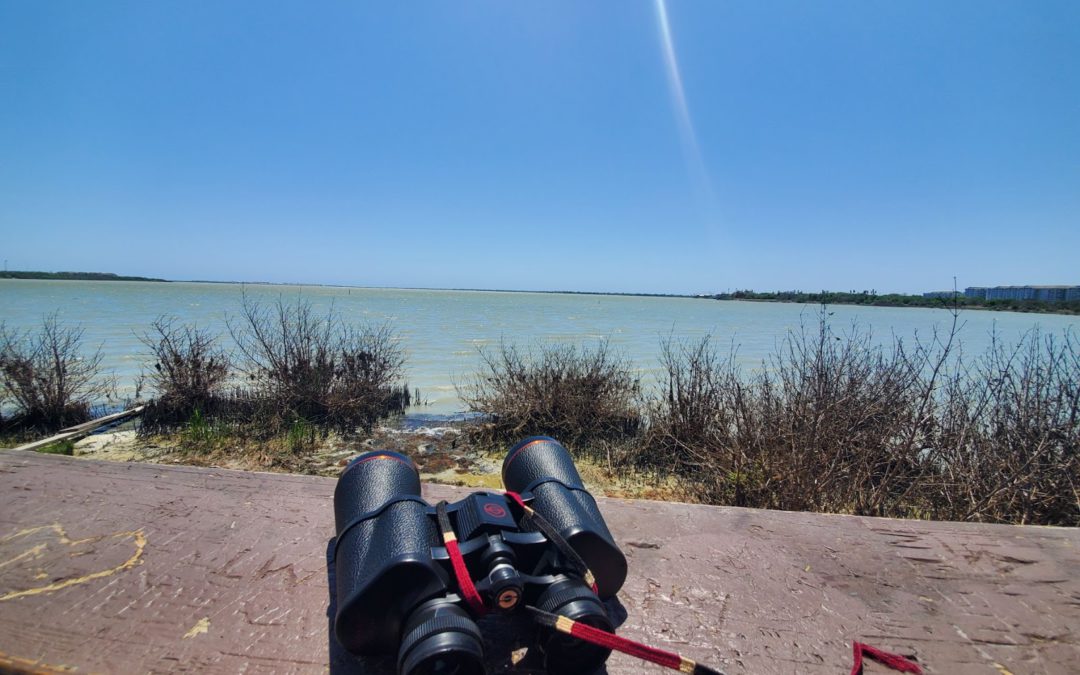Alumni Name: Adam McDonagh
Pronouns: He/Him/His
Dates Served: October – March 2020, September 2020 – Present
What roles was Adam in: 600 Hour Corps Member / ACE EPIC Invasive Management Intern
Location: Corpus Christi / Eagle Lake, Texas
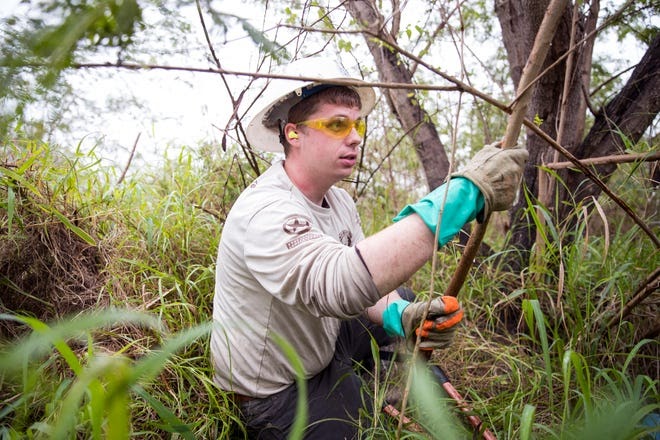
Q: What were you doing before ACE?
A: Prior to ACE, I went to Loyola University Chicago to pursue a Journalism degree, but soon pivoted into Environmental Science. I found that I did not want to write about conservation efforts from the outside looking in – I wanted to directly participate in it. I wasn’t sure what specific dimension of “it” I wanted to work for, but I tried to get involved in as many opportunities across the conservation spectrum as I could.
I volunteered for invasive control projects across a variety of Chicagoland non-profit refuges and had an opportunity processing samples for zebra mussel surveys for my university’s aquatic invasive ecology lab. However, I struggled to build upon those experiences to get any career foothold in either freshwater science or land management.
Post-graduation I was working as a seasonal laborer for Petoskey State Park, formed along the coast of mainland Michigan – managing reservations at the office, patrolling campgrounds, and picking up trash across the dunes and beachfront. It was a lovely place to work filled with even lovelier people, but not the ideal use for my 4-year degree. Luckily, I stumbled upon ACE
Q: How did you hear about ACE?
A: I first heard about ACE by word of mouth in college. The program seemed to have a more streamlined hiring process compared to competing volunteer corps programs, so it was the first organization I turned to when job hunting. Funnily enough, I did not originally seek out the Crew program – I originally applied to an EPIC intern position in California. The folks from ACE Gulf Coast found my resume from the portal system and called me out of the blue, encouraging me to apply for their program – and the rest is history. I would not recommend anyone to rely on that luck.
Q: Walk me through your time at ACE – What was your favorite aspect of being an ACE Crew member?
A: I signed on to ACE Gulf Coast for a 600-hour term. My term was mostly filled with front country invasive species control projects – mostly living in refuge housing or sleeping in tents just outside of them. Backpack spraying, brush cutting, chainsaw cutting, and trail clearing made up the majority of our work. However, the branch has also handled month-long back country projects – so people with different terms can have a significantly different project experience. I was amazed with how much I was exposed to in that short amount of time. That was my favorite part of ACE.
In the span of six months, I worked in more wildlife refuges across the state of Texas than I had seen across the country in my entire life. I did technical labor for a wide variety of coastal prairies, wetlands, beachfront dunes, and mature cypress forests, despite having no prior experience with them. I would not have had that level of professional exposure and opportunities without ACE.
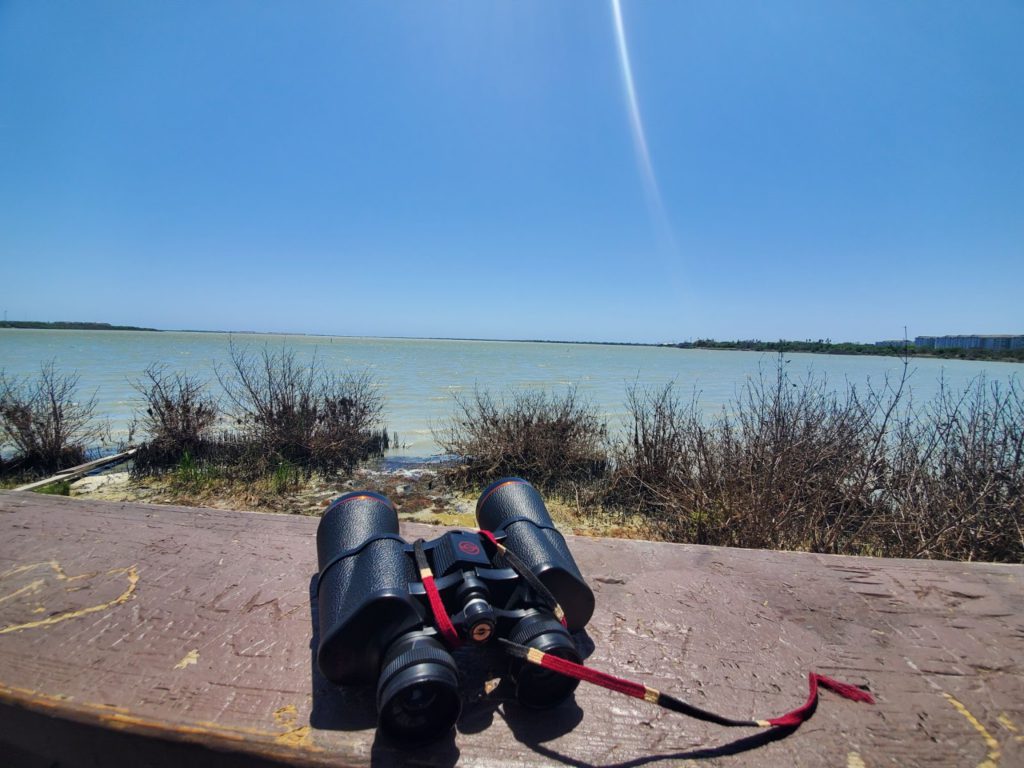
Q: What was it like living in Texas? Any favorite activities? Hikes? What did you do on your off days?
A: Texas was certainly different from the midwest that I called home, but it was different in the right ways – mulberry trees, crawfish, bbq, whataburger, and direct car parking on state park beaches treated me very well, in ways that the midwest cannot provide. Our off days on a hitch varied wildly. Some days, we got together to eat, canoe, or play fierce games of basketball, uno, and smash brothers. Other times, we hibernated in our tents, never to see the light of day – it really can depend on where you were and how worn out you are. Exhaustion from working on projects, alongside the heat and humidity of Texas Gulf Coast, is no joke – but once you adjust, there is a ton to do and see returning from a hitch.
First and foremost, head to the beach! While visiting Padre Island National Seashore at least once is a must, Mustang Island State Park and I.B. Magee Beach Park is the best bang for your buck for local beach access. For those interested in marine wildlife, visiting the Texas Sealife Center and Texas State Aquarium are essential too (try and get into the Texas State Aquarium during one of their free volunteer orientation days – admission can be a bit pricey). If you are looking for an indoor place to cool off, local libraries are a great place to go as well. Within the city, Oso Bay Wetlands Preserve is the best spot for biking, day hiking, and bird watching. Hans and Pat Suter Wildlife Refuge in Corpus Christi and Aransas Woods in Rockport are excellent for bird watching as well.
You are also roughly within a 3-hour drive from Houston, San Antonio, and McAllen (a city right along the southern border and the Rio Grande Valley area) – if you are up for a longer trip, be sure to make the most out of that.
Q: Did you have a favorite project? Why?
A: While I was glad to work for all the ACE Gulf Coast projects I was involved in, I really enjoyed jobs where the benefits from our labor were immediately recognizable.
Our projects removing invasive trees and planting native ones at two Corpus Christi city parks – Hans and Pat Suter Wildlife Refuge and Blucher Park – were noticed, and mostly embraced by, the public. Local visitors would stop by regularly to learn about what we were doing and why, and I learned as much from them as they did from our group. It felt good to benefit habitat that local park goers would appreciate for years to come. Even news crews stopped by to film our work – one photographer caught me in action.
Our two-week stint retrieving tree tubes at Laguna Atascosa National Wildlife Refuge was also rewarding – it was part of a year-long project with ACE to plant native brush ideal for endangered ocelots. Afterwards, the refuge staff treated us to some native chiltepín peppers, a company potluck lunch, and invited us to see them release an ocelot back into the wild. The icing on the cake came weeks later, after folks at Laguna found a wild-born male ocelot near where we worked. It really made all the sweating and body aching worth it.
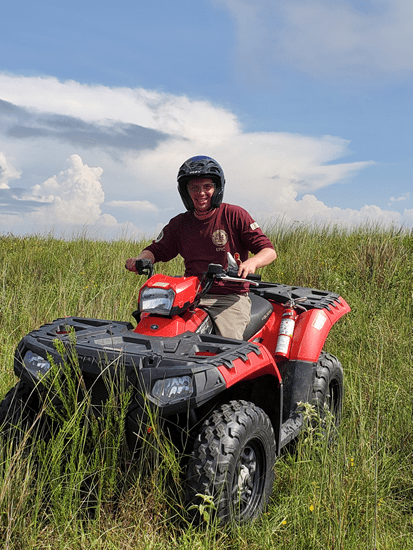
Q: What was the culture of your ACE Tx? How do you feel you participated in that culture?
A: ACE Gulf Coast is one of the younger, smaller crew programs ACE offers – which presents its own sets of pros and cons. A big benefit from the size of ACE Gulf Coast is its intimacy. To date, it consists of two crew teams with approximately 4 – 8 members a piece. You will know all your co-workers and on-site ACE staff by name, and they will know you by name. Crew Leaders, Assistant Crew Leaders, and Administrative Staff can spend more time meeting your needs and refining your skills, and the clients that you work for will recognize you more easily if you choose to pursue working for them in the future.
Like any workplace, some people click better than others. Regardless, everyone I worked with at ACE Gulf Coast valued and encouraged community. We helped each other try new things and push our limits. We helped each other have fun. We helped each other to succeed. And that attitude is invaluable. Every now and then, all crews would get together to hang out while in Corpus Christi. People held an evening bonfire at the beach, ate together at local restaurants, and had a white elephant gift exchange. I cherish every moment of those events to this day.
On the other hand, ACE Gulf Coast Crews do have a unique challenge in not directly providing off project housing – an issue if you don’t live in the South Texas region. I rented out an Airbnb for my time off project. Some spent off project time in motels, others lived with alumni under short term leases, and more lived out of their car. Whatever option people chose, ACE Gulf Coast worked closely with each of us to make the situation as accessible and comfortable as possible.
*A quick note from ACE: Our Gulf Coast division now offers optional off-project housing for members, at cost. Biweekly living allowances in this division are typically higher than those of other ACE Crew divisions in order to help with the additional optional cost. For quesions about housing related to ACE Gulf Coast, please reach out to Caryn Garcia at cgarcia@usaconservation.org.
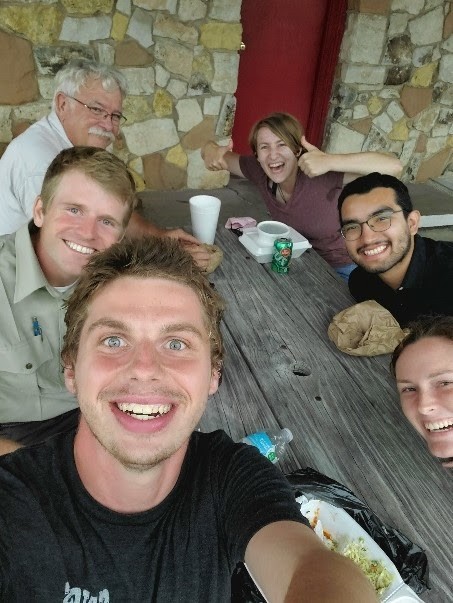
Q: In what ways did ACE shape your life personally and professionally?
A: Professionally, becoming a member of ACE Gulf Coast has been the best career move I have made so far. Working with ACE had given me the confidence and skills to build upon my college classwork and seriously compete in the conservation career field – something that felt improbable just 6 months before I joined them.
My 6 months in ACE Gulf Coast also was a major moment for my emotional growth. You perform strenuous manual labor with people along a wide spectrum of life – fresh faced high school graduates, college students, and graduate students pursuing master programs. Such work can force you to come to grips with the gap between where you are personally, and where you want to be. Some days I was embarrassed, frustrated, exhausted from my mistakes, my ignorance. But through ACE Gulf Coast, I confronted and worked through my weaknesses. With support from my coworkers, I left a better person than when I started. That reason alone made my ACE experience worth it.
Q: How long have you been an ACE Alumni? Where are you now?
A: I have been an ACE Alumni for a little over a year now. I am currently an ACE EPIC Intern for Attwater Prairie Chicken National Wildlife Refuge, supporting wildlife and invasive species control projects since September 2020. After my term ends, I am pursuing GS-04/GS-05 Biological Science Technician positions within the Department of Interior (DOI), as well as seasonal technician positions across a variety of Texas/Illinois non-profit refuges.
Q: What are some of your favorite extracurricular activities?
A: My favorite thing to do lately has been to travel. Every other weekend I try to take a day trip and explore the state of Texas – eating local food, hiking at local parks, or visiting museums. When I am not travelling around, I am gaming on my 3DS or hanging out on my porch reading – dry biographical fare is my bread and butter. I also love to play the keyboard – I can play a killer rendition of hot cross buns and twinkle twinkle little star.
Q: What excites you most about becoming an ACE Alumni Ambassador?
A: I hope to show to others that you do not need to be immediately talented or exceptional to grow and thrive in ACE. I was not a model student, athlete, or conservationist. But with hard work, drive, kindness, (luck), and support from the folks at ACE Gulf Coast, great things have happened for me personally and professionally – and they can happen for you too. That said, my goal is not to enlist everyone I come across into ACE. ACE programs are not for everyone. I want to give people the best information possible for others to make an informed choice on whether ACE is right for them – if it’s right for you.
Q: If a prospective ACE member were to ask you what the benefits of joining ACE are, what would you say?
A: It is one of the most effective ways to network, and build quality work experience quickly. In three to six months, you can have a solid professional reference, and useful skills applied to a variety of DOI institutions – and if you find you don’t like your work, you can leverage your ACE experience to pivot towards another ACE program closer to what you want, with minimal time commitment. They also provide loan forbearance and education award programs that can help aid you while you are pursuing your dream career – benefits not always available in the non-profit or private sector job circuit. Hope all of this helps you make your choice!
Go here to learn more about ACE.
